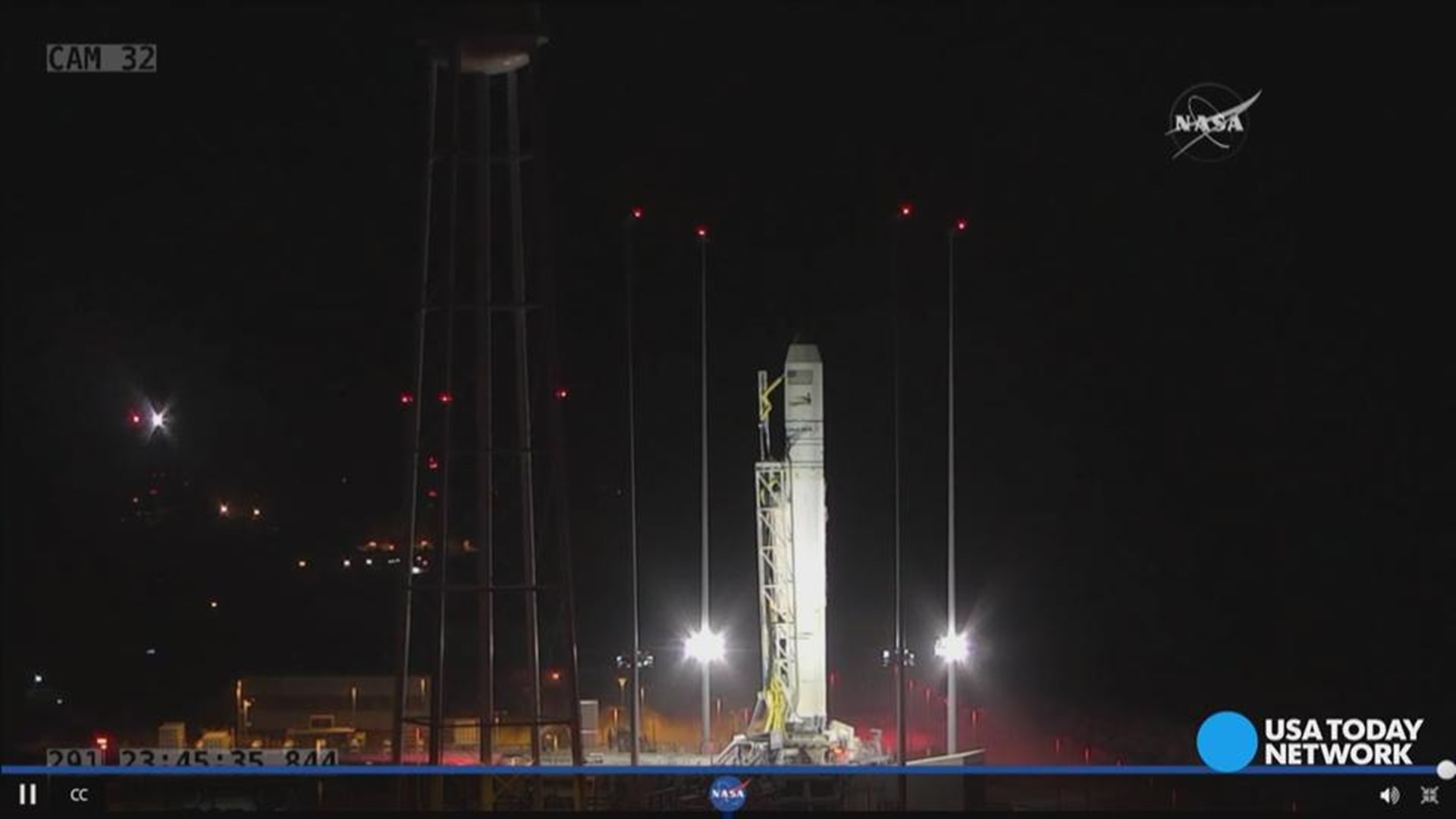Three, two, one.
The countdown on Antares' return to the skies over Virginia's coast struck zero Monday night.
Up soared the rocket, fire-spewing proof that what one engineer called NASA's "biggest show" was indeed back at Wallops Flight Facility. It took off at 7:45 p.m., five minutes later than scheduled but otherwise without incident.
That stood in stark contrast with the last time an Orbital ATK rocket lifted off from Wallops' Pad-0A nearly two years earlier. That flight ended seconds after takeoff in a fiery explosion that shook the program — and the notion that the private sector can fulfill space missions — to the core.
Monday's flight was a long time coming. NASA delayed liftoff five times dating back to May. It was pushed back twice because of tropical weather last week and delayed a final day, from Sunday to Monday, because of a faulty cable on the launch pad.
“It’s been two years of really hard work," said Frank Culbertson, president of Orbital's space systems group. "I think just getting through all the preparations, rehearsals, testing takes a lot of time. We had to be very, very confident it was all going to work.”
The engines fired Monday as the last vestiges of daylight disappeared. Then, several seconds later, the roar.
The 139-foot-tall rocket — powered by new, more-powerful engines — carried more than 5,000 pounds of supplies and scientific gear on the first leg of their journey to the International Space Station. It represented the heaviest payload ever to lift off from Wallops in its 71-year history.
For all the pomp and spectacle, Antares' role was brief. The Cygnus spacecraft, embedded inside the rocket just below the tip, slipped away as designed nine minutes into the flight. Cygnus was set to carry the load the rest of the way to the space station, arriving Oct. 23.
Orbital, based in Dulles, Virginia, and a second company, Elon Musk's SpaceX, have contracts with NASA to conduct the resupply missions. But the $1.9 billion Orbital program came to a halt Oct. 28, 2014, when Antares exploded just seconds after takeoff at Wallops.
A company-led investigation pinned the blame on faulty components inside the engines. The motors themselves were remnants of the Soviet Union's space program, each part several decades old but for those added in the upgrades made to meet the needs of the resupply program.
Monday night's launch marked the debut of Orbital's stronger, Russian-made RD-181 engines. Although the engines had never seen so much as a live test flight, Orbital officials repeatedly affirmed their confidence in the technology, noting their similarities to the workhorse RD-180 model.
To veteran observers, the rocket's crackling growl sounded louder than during previous flights with the old version of Antares' engine.
“It came off the pad faster than the previous version of Antares," Culbertson said. "We could feel the rumble in the building a few seconds afterward, which is always a good feeling.”
The launch also signified the inaugural use of the refurbished Pad-0A, which had undergone $15 million in repairs and upgrades after the 2014 explosion. That cost was shared equally by NASA, Orbital and the Virginia Commercial Space Flight Authority.
Orbital had flown two resupply missions since the 2014 explosion. Both of those flights were out of Cape Canaveral in Florida and used another company's engines. Monday's marked Orbital's fifth successful takeoff since the first flight under the contract in 2013.
By leaving Monday, the rocket made a return.
“We’re very excited here at the Wallops launch team to have the biggest show back in town," said Sarah Daugherty, Wallops' test director, at a press conference Saturday.
Orbital has six more flights under its 2008 NASA contract, and it is set to conduct six more under a separate contract that continues the program through 2024. The company has indicated that some of those launches may take place in Florida.
Monday's launch was pushed back five minutes to make sure no steps on the pre-launch checklist got skipped, Culbertson said. If Orbital was perhaps overly cautious in its return to Wallops, he added, it was for a good reason.
“People don’t remember so much when you launch, he said, "but whether you launch.”

